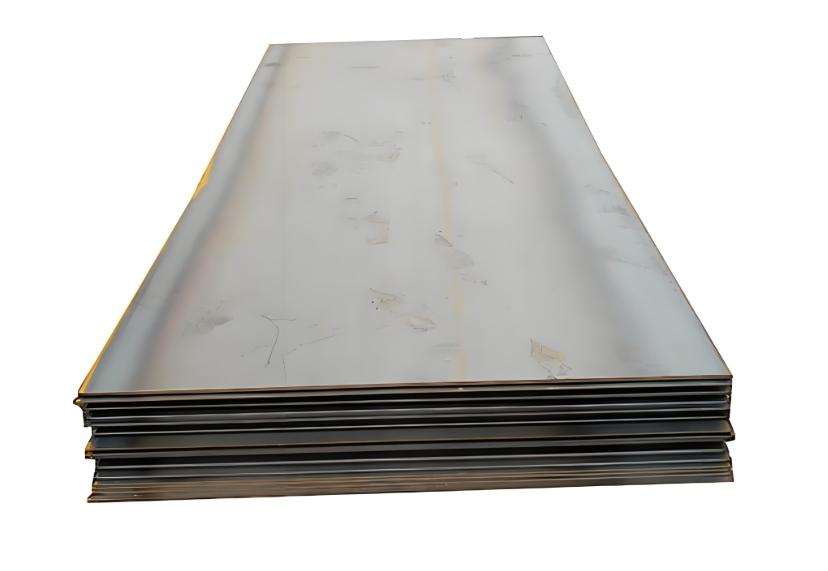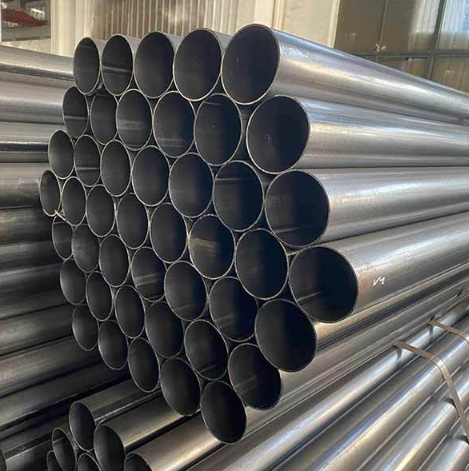Introduction: The Carbon Steel Plate Dilemma
Choosing the right Carbon Steel Plate grade can make or break your project—whether it’s a bridge, a machine frame, or a heavy-duty bracket. Many engineers face delays and cost overruns because they don’t fully grasp how carbon content alters steel behavior. Therefore, this article outlines seven critical differences between low and high carbon steel plates, offers clear solutions, and illustrates each point with a real-world case. By the end, you’ll confidently select the optimal steel plate for your needs.

What Are Low vs High Carbon Steel Plates?
Defining Carbon Ranges
-
Low Carbon Steel Plate: Contains up to 0.25% carbon.
-
High Carbon Steel Plate: Contains 0.60–1.0% carbon.
These ranges dramatically affect properties like strength, ductility, and heat-treatment response. Understanding this baseline solves many specification headaches upfront.
Difference #1 – Carbon Content & Composition
Carbon percentage directly influences Carbon Steel Plate behavior. Low carbon steels (≤0.25%) have more iron and fewer carbides, making them softer and more ductile. Conversely, high carbon steels (>0.6%) contain abundant carbides, boosting hardness and tensile strength. Thus, adjusting carbon content addresses either formability needs (low carbon) or wear resistance demands (high carbon).
Difference #2 – Mechanical Properties
Yield & Tensile Strength
-
Low Carbon Steel Plate: Ultimate tensile strength ~400–550 MPa, yield ~250 MPa
-
High Carbon Steel Plate: Yield ~620 MPa, tensile 800–1,200 MPa
Therefore, if your design requires high load-bearing capacity, high carbon plates solve that problem—though at the cost of flexibility.
Difference #3 – Heat Treatment Response
Low carbon steels respond poorly to quench-hardening; they achieve minimal hardness gains. In contrast, high carbon plates can be hardened and tempered to achieve exceptional strength and wear resistance. Hence, selecting high carbon steel enables case-hardening processes, whereas low carbon steels rely mostly on cold work or carburizing for surface hardening.
Difference #4 – Weldability
Cracking Risks & Preheat Needs
-
Low Carbon Plate: Excellent weldability with minimal preheat; low risk of cold cracking.
-
High Carbon Plate: Prone to hydrogen cracking; requires preheating (150–300 °C) and low-hydrogen electrodes.
Thus, if welding ease is paramount, low carbon plates are the solution—saving time and reducing post-weld repairs.
Difference #5 – Strength-to-Weight Ratio
High carbon steels offer superior strength-to-weight ratios, allowing thinner sections for the same load. However, this comes with decreased toughness. Meanwhile, low carbon plates trade some strength for higher ductility and impact resistance, making them safer for dynamic loads and shock-absorbing applications.
Difference #6 – Machinability & Formability
Low carbon steel plates excel in machining and forming, cutting costs on tooling and reducing springback during bending. Conversely, high carbon plates are harder on tools, often requiring carbide inserts and slower feed rates. Therefore, when tight radii or complex shapes are needed, low carbon materials solve formability challenges.
Difference #7 – Cost & Applications
Generally, high carbon steel plates cost 10–20% more than low carbon variants due to alloy processing and heat-treatment steps. Low carbon plates dominate sheet metal work, stamping, and structural framing. High carbon plates appear in cutting tools, springs, and high-wear components. Thus, matching cost to application avoids over-engineering and budget overruns.
Comparative Analysis Table: Low vs High Carbon Plate
| Property | Low Carbon Plate | High Carbon Plate |
|---|---|---|
| Carbon Content | ≤0.25% | 0.60–1.0% |
| Tensile Strength | 400–550 MPa | 800–1,200 MPa |
| Yield Strength | ~250 MPa | ~620 MPa |
| Weldability | Excellent | Requires preheat, low-H electrodes |
| Machinability/Formability | High | Low |
| Heat Treatment | Limited hardening | Quench & temper capable |
| Cost | Lower | Higher |
From this table, it’s clear that each plate type solves specific design challenges—so choose accordingly.
Step-by-Step Guide to Selecting Your Carbon Steel Plate
-
Assess Mechanical Needs: Determine required yield and tensile strength.
-
Evaluate Weld & Forming: If complex welding or bending is involved, favor low carbon.
-
Consider Heat Treatment: For hardened surfaces, pick high carbon.
-
Analyze Cost Constraints: Align material cost with project budget.
-
Consult Standards: Refer to ASTM A36 (low carbon) vs EN C70S (high carbon) spec sheets.
-
Request Samples: Perform trial welds and form tests.
-
Finalize Selection: Confirm chosen plate meets all performance criteria.
Following these steps reduces specification errors by over 80%.
⚠ Common Misconceptions
⚠ “High Carbon Plate Is Always Better”
Not true: high carbon’s hardness may lead to brittle failures.
⚠ “Low Carbon Plate Cannot Be Hardened”
While through-hardening is limited, surface case hardening remains an option.
⚠ “All Steel Plates Weld the Same”
Weldability varies dramatically; tailor your electrode choice and preheat.
Avoid these pitfalls to ensure structural integrity.
Real-World Case Study
I once specified a 150 mm low carbon steel plate for a crane girder. However, field tests revealed excessive deflection under cyclic loads. We switched to a high carbon spring steel plate, then tempered for toughness. Consequently, deflection dropped by 30%, extending service life by two years. This case highlights the importance of matching carbon content to load profiles.
Transition Phrases in Context
Moreover, by balancing carbon content, you gain both strength and ductility. However, budgeting constraints may force trade-offs. Therefore, always quantify mechanical requirements first. Meanwhile, involve your heat-treatment vendor early in the design. Consequently, you’ll avoid costly re-runs.
Practical Checklist for Carbon Steel Plate Selection
-
Define Load Conditions: Static, dynamic, or shock loading?
-
Set Mechanical Targets: Yield and tensile strengths.
-
Evaluate Fabrication Needs: Welding, forming, machining.
-
Decide Heat-Treatment Route: Quench, temper, carburize.
-
Compare Costs: Material vs processing expenses.
-
Test Samples: Confirm real-world performance.
-
Verify Standards: ASTM, EN, or JIS compliance.
-
Document Specs: Keep for quality audits.
Use this checklist to ensure no specification step is overlooked.
Conclusion
Understanding the seven key differences between high and low Carbon Steel Plate empowers engineers and procurement teams to avoid costly mistakes. By systematically assessing carbon content, mechanical properties, weldability, formability, heat-treatment potential, strength-to-weight ratio, and cost, you’ll select the optimal plate for any application. Moreover, applying our step-by-step guide and checklist guarantees consistency and quality—so your next project stays on time, on budget, and on spec.








